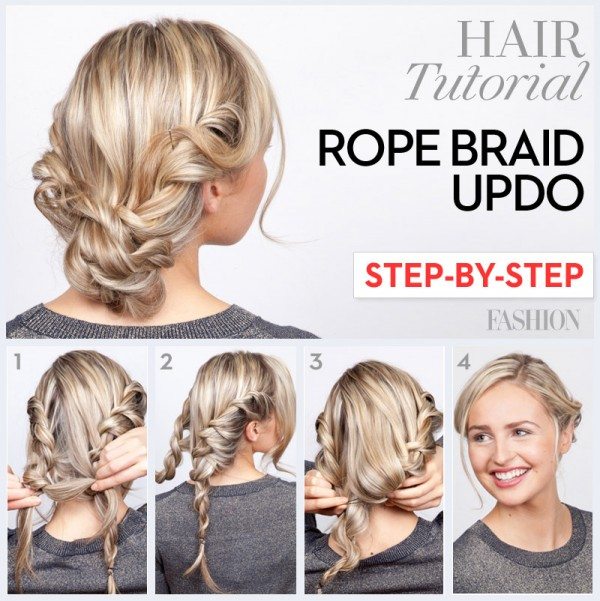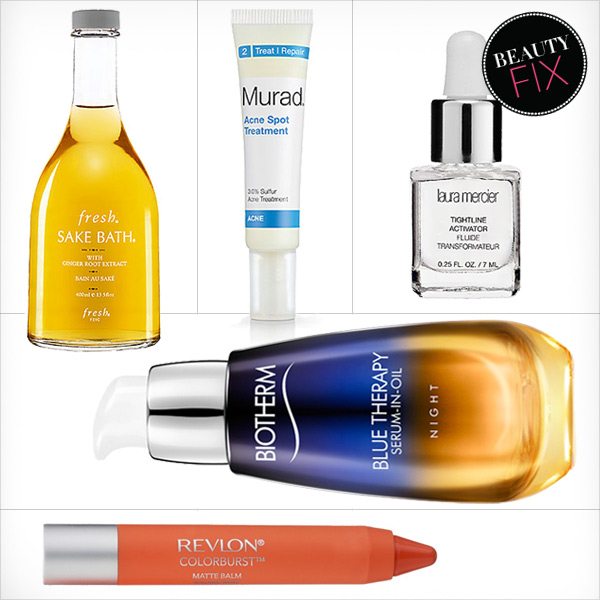الأحد، 29 ديسمبر 2013
Posted By:Unknown | At:4:24 ص
Be the first to comment!
السبت، 28 ديسمبر 2013
Posted By:Unknown | At:1:10 م
Be the first to comment!
Posted By:Unknown | At:1:02 م
Be the first to comment!
- Be careful with Effeminate look

Posted By:Unknown | At:3:55 ص
Be the first to comment!
Bugattis, Fabergé eggs, Netsuke figurines: People collect all sorts of weird, wonderful things. At a 2009 Christie’s auction, an empty perfume bottle from the collection ofYves Saint Laurent and Pierre Bergé sold for nearly 9 million euros. Crafted in 1921, it was a Marcel Duchamp “readymade”—a work of art made from an existing object, in this case a Rigaud perfume bottle Duchamp had decorated with a Man Ray photograph of himself dressed as his female alter ego, Rrose Selavy.
Maybe the potions and lotions in your possession will never command such stratospheric prices, but money is not always the end game. We collect to adorn ourselves and our surroundings: Imagine, if you will, a scentless, colourless world. Too sad.
Cosmetics brands stoke our collective yen by releasing limited-edition products and collaborating with artists and designers: Limited quantities in finite duration are the hallmarks of all collecting. While I treasure my Roy Lichtenstein-esque Wonder Woman for M.A.C palette, maybe its only value lies in my delight. Ditto Stila’s Stunning in Sayulita palette, reminiscent of Japanese artist Hokusai,
There are countless opportunities for dabblers, aficionados and connoisseurs to obsess over the ever-expanding beauty galaxy. “I buy first with my nose, but then it must charm my eyes,” says Laure Heriard Dubreuil, CEO of The Webster hotel in Miami, whose philosophy even extends to her toothpaste: she uses picturesque tubes of Marvis.
My Tatcha Camellia Beauty Oil and peony-infused Enriching Renewal Cream are delicate in their geisha-inspired design and powerfully efficient. Alongside Neal’s Yard Remedies cobalt apothecary bottles of white tea mists and rose balms, they create a still life worthy of Fantin-Latour. And I’ve never met a Diptyque scent I didn’t love: The new Le Sablier, an hourglass diffuser with Baies scent, is a collector’s dream. So too are Guerlain’s Rouge G de Guerlain lipsticks in bullet-shaped cases with flip-top mirrors, designed by Place Vendome jeweller Lorenz Bäumer.
“I must have every lipstick ever produced,” admits Kathy Citrullo, who often hunts for niche cosmetics at Gee Beauty in Toronto. We are both fans of the modishly austere Clé de Peau line, especially the refillable lipstick cases with faceted gold tips. Its Beauté Noir fragrance was created by Alberto Morillas, the master parfumeur behind Amouage’s Opus VII from the show-stopping Library Collection. Beauté Noir’s “visual identity,” or bottle—a vanity table must—was concocted by designers Benoît-Pierre Emery and Damian O’Sullivan, who have worked for Hermès. Next time I get to Tokyo, I’ll hunt down Cosmo Decorte’s Magical Face Powder, conceived by interior designer Marcel Wanders—it’s too beautiful for words. If Ai Weiwei ever makes a bronzer, I’ll be all over it.
That designers are being named and hailed for perfumes and powders underscores the cult of the personality, and allows beauty brands to reach out to aesthetes in other fields. Perhaps the next Le Corbusier will design a cutting-edge face serum, or a future Salvador Dalí will engineer a Schiaparelli-inspired perfume bottle that will sell for$37,999 on eBay.
“I’m known as the perfume concierge,” says Debra Thier, a style consultant and Gee shopper. “People go up to my bedroom to see what new perfume is on my desk. Right now it’s Le Labo Gaiac 10; I get the most compliments on that.” She also admires Chantecaille limited-edition eyeshadow palettes, which highlight endangered species and the organizations preventing their extinction. She scours the Wall Street Journal’s style section and follows makeup artist Gucci Westman on Instagram for tips and inspiration. “In the end,” she says, “it’s all about the find.”
Yes, the find, almost like landing a woolly mammoth. Collecting is mostly about what you’re looking for, not what you’ve already bagged. Thier is currently stalking cult New York facialist Joanna Vargas’s skincare. Julie Selley, a Grade 1 teacher and a customer at Pir Cosmetics in Toronto (not necessarily in that order), says the store’s owners email her when a particularly exciting item comes in, such as E. Coudray perfumed body oil from Paris. She’s partial to products by Lollia and Tokyo Milk creator Margot Elena, whose motto is “Fight for Good Design.” Amen. Selley also seizes the opportunity to shop for products that aren’t available in Canada when she visits her brother in Malibu.
Most of these beauty bounty hunters share a fascination with perfume that began in childhood. Proust had his madeleine, but I smelled Arpège by Lanvin on my mother’s dresser and a magnificent obsession was born. Prescriptives’ Calyx, created by legendary nose Sophia Grojsman (discontinued in 2010, it has just been relaunched as Clinique Calyx), was my first grown-up summer scent. Eventually I landed at the pinnacle, Sisley’s Eau du Soir, which is to perfume as Château d’Yquem is to table wine.
Celine Kaplan works in public relations for celebrated nose Francis Kurkdjian, co-creator of Narciso Rodriguez’s For Her (I die) and Guerlain’s Rose de Barbare (I die more). Kaplan’s perfume passion began with her grandmother, who loved Guerlain’s Vol de Nuit because it was named after aviator Antoine de Saint-Exupéry’s novel—she was among the first stewardesses to work for Air France. “There were no ugly beauty products in her house,” says Kaplan. “Packaging was as important as the juice.”
Erudite blogs such as Grain de Musc, Bois de Jasmin and Now Smell This offer a whiff of how seriously perfume acolytes take things. Karen Dubin, a founder of Sniffapalooza, which organizes global excursions and events for perfume lovers, remembers collecting tiny perfume bottles from her grandmother’s travels when she was four years old. Now, her 750-strong collection includes scents from By Kilian and Roja Parfums, and is filed into categories: French, Italian, classics, designer, very niche, mainstream niche. “At one point, it was actually taking over my apartment,” Dubin says. When it outgrew three art deco vanities and multiple Lalique trays, she was forced to resort to “a massive Ikea unit that runs along an entire wall in my living room.”
Such dedication is a means of self-renewal—it’s amazing how, say, Chantecaille’s rosewater can lift the spirits. “It just makes me happy,” Thier says. “Maybe I’ve got too much time or money on my hands,” jokes Citrullo. Or just maybe we’re building our sentimental educations. After all, knowledge is powder…or lipstick, or anything by Tom Ford.
Posted By:Unknown | At:3:44 ص
Be the first to comment!
We have one last holiday hair tutorial to share, and this one is a New Year’s Eve-ready twist on the rope braid. First of all, don’t be intimated by this braiding technique. It’s much easier than it looks, especially because you’re only working with two strands of hair, not three. So if you’ve ever felt like you could use a second set of hands while attempting a French braid, the rope braid may just be the hairstyle for you.
Our step-by-step rope braid tutorial was developed by Toronto-based hairstylist Margot Keith, and breaks down everything you need to know to master this twistedupdo. Oh, and did we mention? The other excellent thing about this holiday hairstyle is that it works best on second-day hair—meaning you can skip the shampooing and the blowdrying and instead enjoy a well-deserved bit of holiday relaxation. Ready to try? Read on for the full rope braid updo tutorial.

Holiday Hair Tutorial: Rope Braid Updo
1. This updo may look like a halo braid, but it’s actually two French rope braids that come together at the nape of your neck. Section your hair in half, pigtail style. Start each braid at the side of your head, above your ear. Take two 2-inch sections of hair, twist the pieces a few times and then criss-cross them over each other—you’ll want to criss-cross twice. Now, just like a traditional French braid, add some hair to each section. Twist both pieces and criss-cross again. Repeat.
2. Continue braiding until you reach the nape of your neck. Loosely rope braid the remaining hair and secure each braid with an elastic. Tip: Make sure not to tug too tightly on your hair—you want the braids to hang comfortably and no part to be visible at the back or top of your head.
3. Tuck the ends of your first braid under and coil it up like a bun. Pin it into place. Repeat this step with the second braid.
4. Pin any larger, loose strands of hair into the braid but leave any smaller pieces loose. Add a light mist of hairspray to hold it all in place and you’re done—bring on theholiday parties!
Posted By:Unknown | At:3:27 ص
Be the first to comment!
Even in today’s highly experimental fashion arena, it seems like a fantasy that a shoe-shaped hat could ever be considered high fashion. That, however, was the fantastical world of Elsa Schiaparelli. A true original, “Schiap” was a dominant fashion force in the ’30s and ’40s, and was hailed as a genius by her contemporaries (a 1934 Timearticle listed her as even more influential than rival Coco Chanel). Best known for pioneering a sense of playfulness and whimsy in fashion, the Italian-born designercaptured the time’s Surrealist zeitgeist in collaborations with artists Salvador Dalí and Jean Cocteau.
Schiaparelli’s most iconic pieces included a skeleton-like quilted dress, a gown oftrompe l’oeil rips and tears and the famed Lobster Dress, which made titillating history when Wallis Simpson wore it in her engagement photos. Schiaparelli was also one of the first to bring colour to couture, including her signature, shocking pink.
By the end of the ’40s, a new generation of couturiers had emerged, including Cristóbal Balenciaga and Christian Dior, whose New Look would transfix the fashion world. In 1954, the house of Schiaparelli declared bankruptcy and the designer retired to her home in Tunisia.
After decades of obscurity in the archives of fashion history, new interest in Schiaparelli’s imaginative aesthetic came to a head in 2012 with the Metropolitan Museum of Art Costume Institute’s exhibit Schiaparelli and Prada: Impossible Conversations.
This year, Tod’s CEO, Diego Della Valle, relaunched the house of Schiaparelli with a one-off collection designed by couturier Christian Lacroix. Exaggerated mock pannier-like pockets, a fur skirt and a black-and-pink-striped gown are just a few examples ofhis anything-goes interpretations of Schiap’s signatures. In September, Rochas designer Marco Zanini was announced as Lacroix’s permanent successor. His first collection will debut next month at couture week in Paris, and we expect big things. Surreal things. Shocking, even.
الاشتراك في:
الرسائل (Atom)







